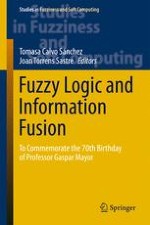This book offers a timely report on key theories and applications of soft-computing. Written in honour of Professor Gaspar Mayor on his 70th birthday, it primarily focuses on areas related to his research, including fuzzy binary operators, aggregation functions, multi-distances, and fuzzy consensus/decision models. It also discusses a number of interesting applications such as the implementation of fuzzy mathematical morphology based on Mayor-Torrens t-norms. Importantly, the different chapters, authored by leading experts, present novel results and offer new perspectives on different aspects of Mayor’s research. The book also includes an overview of evolutionary fuzzy systems, a topic that is not one of Mayor’s main areas of interest, and a final chapter written by the Spanish pioneer in fuzzy logic, Professor E. Trillas. Computer and decision scientists, knowledge engineers and mathematicians alike will find here an authoritative overview of key soft-computing concepts and techniques.
